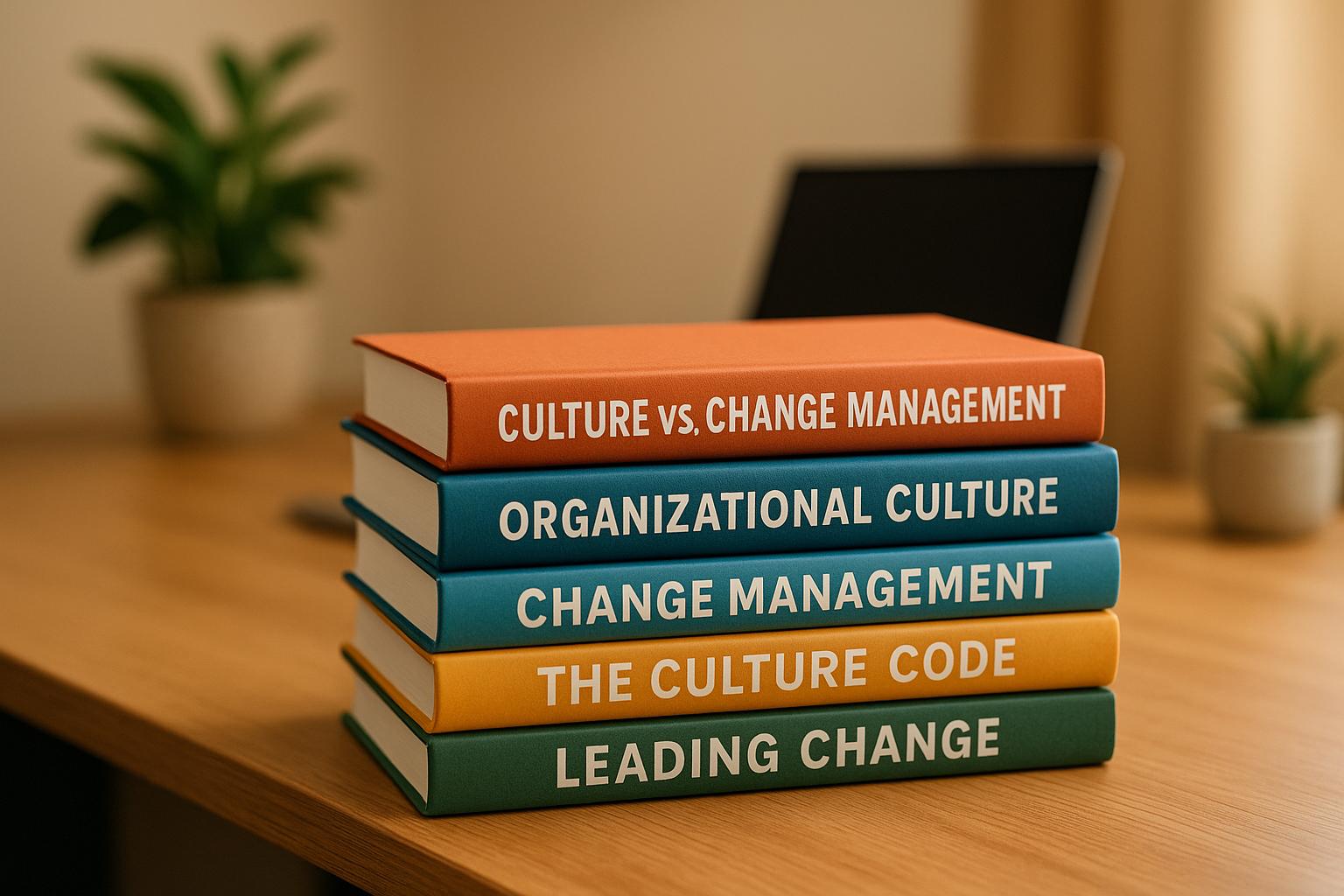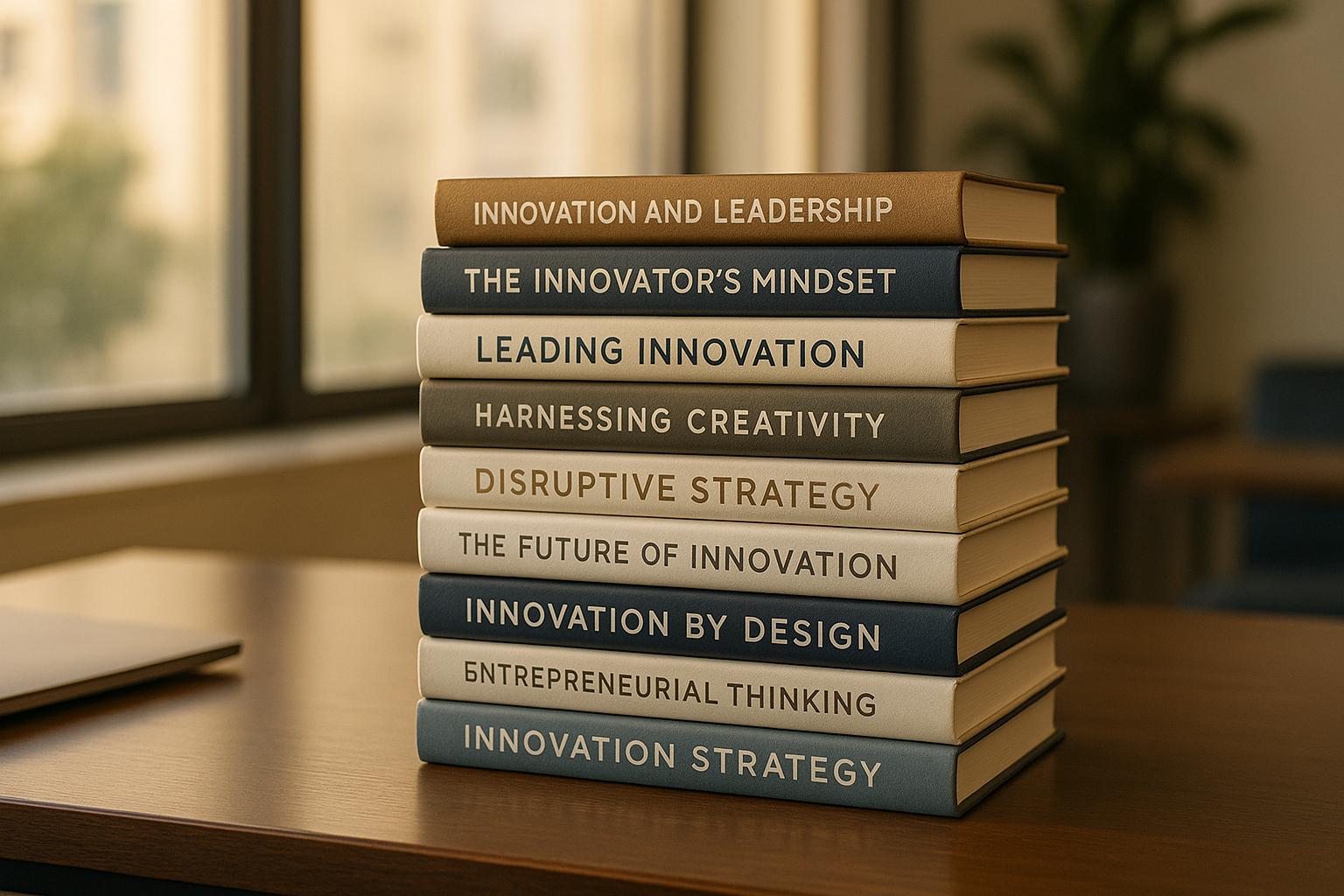What makes a strategy timeless? It’s about sticking to core business fundamentals like understanding customer needs, building competitive advantages, and staying flexible in a changing market. This article breaks down proven principles from top strategy experts, offering insights on how to succeed in any business environment.
Key Takeaways:
- Core Elements of Strategy: Focus on market positioning, operational efficiency, innovation, and leadership.
- Adapting to Change: Combine long-term planning with flexibility to stay relevant.
- Lessons from Experts: Learn from authors of renowned books like Good Strategy, Bad Strategy, Start with Why, and The 7 Habits of Highly Effective People.
- Modern Applications: Blend classic principles with today’s trends like AI, customer experience, and sustainability.
Quick Overview:
| Key Principle | Focus | How It Helps |
|---|---|---|
| Market Position | Unique Value Proposition | Differentiates you from competitors |
| Operational Efficiency | Process Optimization | Improves productivity and reduces waste |
| Innovation Integration | Growth and Relevance | Keeps products/services aligned with trends |
| Leadership Development | Team Motivation | Ensures strategies are executed effectively |
Timeless strategies succeed because they balance consistency with adaptability. This guide will show you how to apply these principles in today’s fast-changing business world.
Strategy Rules: Five Timeless Lessons from Bill Gates, Andy Grove, and Steve Jobs
Core Strategy Principles
Building on foundational insights, let’s dive into the key components that form the backbone of enduring strategies.
Key Elements of Strategy
Successful business strategies share common traits that work across industries and market conditions. These elements focus on building long-term advantages while staying flexible in operations.
Strategic positioning requires a clear understanding of the market and decisive actions. To craft an effective strategy, businesses need to make deliberate choices about:
- Where they compete
- How they offer unique value
- Which skills and resources to develop
Here’s a breakdown of the main components that drive successful strategies:
| Strategic Element | Core Focus | Implementation Approach |
|---|---|---|
| Market Position | Unique Value Proposition | Stand out clearly from competitors |
| Operational Excellence | Process Optimization | Use systems for continuous improvement |
| Innovation Culture | Growth and Relevance | Regularly evolve products/services |
| Leadership Development | Team Cohesion | Foster open communication channels |
These elements work together to create lasting advantages and fuel growth.
Long-term Planning vs. Market Changes
While the core principles of a strategy remain steady, the way they’re applied must shift with changing market conditions. Striking the right balance between consistency and adaptability allows businesses to stay relevant while staying true to their strategic goals.
"How today's entrepreneurs use continuous innovation to create radically successful businesses." - The Lean Startup
To plan effectively for the long term, organizations should focus on three critical areas:
1. Strategic Flexibility
Companies need frameworks that allow them to adjust quickly to market shifts without losing sight of their overall strategy. This includes systems to:
- Monitor market trends and signals
- Evaluate new opportunities systematically
- Make changes without disrupting core operations
2. Innovation Integration
Embedding innovation into the strategy helps businesses:
- React to emerging trends
- Keep their competitive edge
- Offer new value to customers
3. Leadership Alignment
Strong leadership ensures that strategies are executed consistently across all levels. As highlighted in Start with Why:
"How great leaders inspire everyone to take action." - Start with Why
Balancing consistency with adaptability means holding onto clear strategic principles while staying open to new opportunities. This approach enables organizations to:
- Stay true to their core identity
- Take advantage of market changes
- Build long-lasting advantages
- Drive sustainable growth
Strategy Through Time
Major Changes in Strategy
Over the years, business strategy has shifted significantly - from focusing on competitive analysis and market positioning to prioritizing customer experiences and innovation. These changes reflect evolving market conditions and technological advancements.
| Era | Core Focus | Key Drivers |
|---|---|---|
| 1980s-1990s | Competition Analysis | Market share, operational efficiency |
| 2000s | Digital Transformation | E-commerce, online presence |
| 2010s | Customer Experience | Social media, mobile-first trends |
| 2020s | Innovation & Flexibility | AI, sustainability, remote work |
Digital technology has played a massive role in reshaping how businesses operate. Strategies today must blend traditional strengths with the ability to innovate quickly and engage customers deeply. These historical changes have laid the groundwork for combining timeless strategy concepts with today’s business needs.
Classic Principles in Modern Business
Even with rapid advancements in markets and technology, certain strategy fundamentals remain essential for success. These enduring principles provide a foundation for modern businesses:
- Leadership and Vision: Strong leadership ensures clear direction and motivates teams to execute strategies effectively.
- Effective Communication: While digital tools have revolutionized communication, the basics of building relationships and influencing others remain crucial. The principles outlined in How to Win Friends and Influence People are still highly relevant for fostering effective communication in business.
-
Resilient Frameworks: Modern companies thrive by combining timeless strategies with new technologies. This includes:
- Staying rooted in core values while embracing innovation
- Delivering customer value across all touchpoints
- Building organizational cultures that encourage creativity
- Creating systems for continuous learning and improvement
By merging these classic principles with modern execution techniques, businesses can stay grounded while navigating the fast-paced changes in today’s market.
"Powerful lessons in personal change and leadership." - The 7 Habits of Highly Effective People
sbb-itb-1ae7b2a
Putting Strategy into Action
This section focuses on turning timeless strategy principles into actionable steps.
Success Stories and Examples
Applying timeless strategies can lead to long-term organizational success. Here’s how:
Turning Vision into Action
Organizations can implement their strategic vision by focusing on:
- Setting quarterly objectives
- Defining success metrics
- Establishing accountability systems
- Encouraging cross-team communication
Improving Operational Efficiency
Execution improves when organizations focus on:
- Regularly scheduled reviews with clear KPIs
- Using structured decision-making frameworks
- Allocating resources effectively
- Tracking performance consistently
These approaches provide a strong foundation for the implementation methods outlined below.
Strategy Implementation Methods
Here’s a practical framework to help organizations put their strategic principles into practice:
Framework Implementation Process
| Phase | Key Activities | Expected Outcomes |
|---|---|---|
| Planning | Define vision, set goals, assess resources | Clear objectives and measurable metrics |
| Alignment | Communicate with teams, clarify roles, build commitment | Organization-wide clarity and buy-in |
| Execution | Implement action plans, monitor progress | Tangible progress toward goals |
| Review | Analyze performance, make adjustments | Refined strategies and improved results |
Key Components for Implementation
-
Leadership Development
- Establish effective communication channels
- Use structured decision-making tools
- Motivate teams with clear goals
- Create systems for managing performance
-
Operational Integration
- Hold regular strategy review meetings
- Use performance metrics to evaluate progress
- Allocate resources strategically
- Monitor and adjust plans as needed
-
Cultural Alignment
- Promote shared values and a unified vision
- Develop clear communication protocols
- Encourage collaborative decision-making
- Foster a culture of continuous learning
Key Strategy Lessons
Organizations with years of experience often blend established principles with fresh thinking to achieve success.
Core Strategic Foundations
Strategic success relies on three main pillars:
- Understanding the Market: Study competitive forces and customer needs.
- Operational Agility: Create systems that are efficient yet flexible.
- Leadership Development: Cultivate leaders who combine vision with effective execution.
These pillars form the base for comparing traditional and modern approaches to strategy.
Practical Application Framework
| Strategic Element | Traditional Approach | Modern Application |
|---|---|---|
| Planning Horizon | Fixed 5-year plans | Rolling 18-month plans with quarterly updates |
| Decision Making | Top-down hierarchy | Collaborative with fast feedback loops |
| Innovation Focus | Internal R&D | Ecosystem-driven development |
| Market Response | Annual adjustments | Real-time changes |
Building Strategic Resilience
To strengthen resilience, organizations should:
- Establish frameworks that address both immediate and long-term goals.
- Create systems that encourage ongoing learning and adaptation.
- Ensure clear and consistent communication channels.
- Monitor metrics that measure both short-term outcomes and long-term value.
These practices help organizations stay agile and prepared for growth.
Next Steps for Strategic Growth
To advance strategic capabilities, focus on these areas:
- Master the Basics: Deepen understanding of core strategy principles and frameworks.
- Embrace New Ideas: Explore disruptive concepts that could reshape your industry.
- Develop Leadership: Invest in targeted training and hands-on leadership experiences.
- Track Market Trends: Stay informed about emerging trends without losing focus on your strategy.
Balancing tried-and-true principles with modern challenges is key to achieving long-term goals. By doing so, organizations can remain competitive while staying aligned with their vision.
FAQs
What’s the best way for businesses to balance long-term strategy with staying flexible in a changing market?
Balancing long-term strategy with adaptability requires a combination of clear vision and flexibility. Businesses should focus on setting core strategic goals that guide their long-term direction while building agility into their processes to respond to market shifts.
One effective approach is to regularly review and adjust strategies based on market trends, customer feedback, and emerging opportunities. Prioritize innovation and encourage a culture where teams can pivot quickly when needed, but always ensure decisions align with your overarching goals. This balance helps businesses stay resilient and competitive over time.
How can companies effectively incorporate innovation into their existing strategy?
To successfully integrate innovation into an existing strategy, companies can focus on a few key practices. Start by fostering a culture that encourages creativity and experimentation across all levels of the organization. This can include dedicating resources to innovation teams or providing employees with time and tools to explore new ideas.
Another practical approach is aligning innovation initiatives with the company’s core objectives. By identifying areas where innovation can enhance current processes, products, or services, businesses can ensure new ideas complement their overarching goals. Additionally, regularly reviewing and adapting the strategy framework to incorporate emerging trends and technologies can help maintain long-term relevance and competitiveness.
Ultimately, balancing innovation with existing strengths allows companies to evolve while staying true to their strategic vision.
How do timeless strategy principles remain relevant in addressing modern challenges like AI and sustainability?
Timeless strategy principles, such as focusing on long-term goals, adaptability, and value creation, are highly relevant when tackling modern challenges like AI and sustainability. These principles provide a solid foundation for navigating rapid technological advancements and addressing global concerns.
For instance, companies can apply strategic foresight to integrate AI responsibly into their operations, ensuring it aligns with their mission and creates sustainable value. Similarly, businesses prioritizing sustainability can use these principles to balance profitability with environmental and social impact, ensuring they remain competitive while contributing positively to the world.


